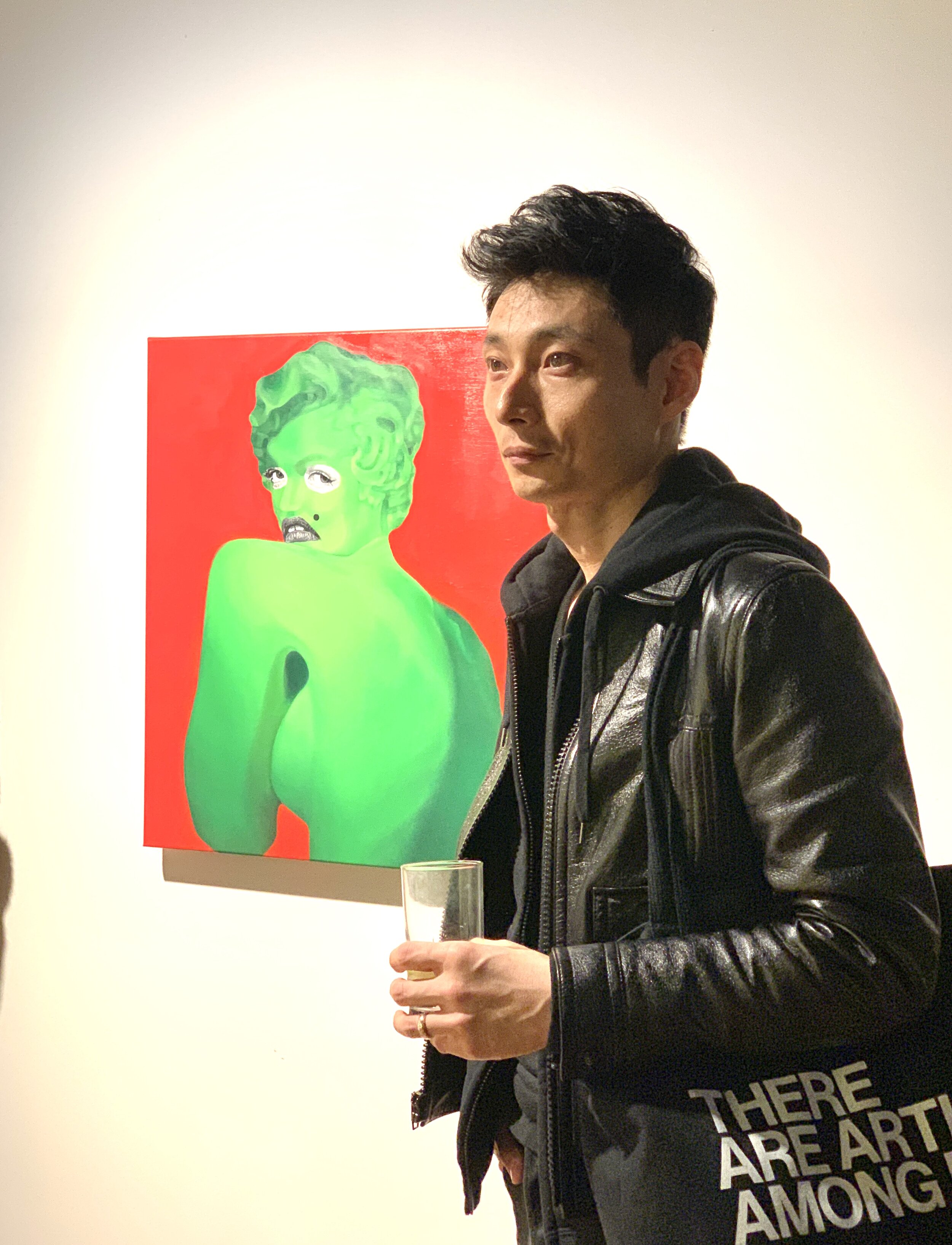FAME WITH TEIJI HAYAMA
Fame by Teiji Hayama at The Unit Gallery - Until 15 February 2020
What does FAME in the digital age mean to you?
What do you think FAME means to others?
But first, congratulations to this fabulous exhibition and opening night at The Unit London gallery in London, Mayfair on 14 January! I love this gallery! When I visited it for the first time in early 2019, I thought, it looks exactly like the gallery I always daydreamed about to have my work exhibited one day. A mix of modern industrial chic and warmth plus a touch of high-tech with that huge screen in the entry area. It’s perfectly located in the city centre, between Oxford and Piccadilly Circus, right next to British Vogue.
The Japanese artist, Teiji Hayama told us that it is his first solo show in London. He’s done a couple of group shows but not one solo show in London yet. In total it took him 1.5 years to finish the Fame collection. He worked on some paintings for about 4 weeks, two months on others, depending on the size. I was curious and asked him about his process. By the way, that’s a more interesting question to ask than the usual “so what’s the artist’s intention with all that"?”. Teiji takes images of celebrities like David Bowie, Marilyn Monroe, Elizabeth Taylor or Goldie Hawn and plays with them in Photoshop. He distorts the photographs until they will finally be used as templates and “copy paints” them using oil colours on medium to large sized canvas. Teiji also shared that his painting style has been much more overloaded in the past compared to the series we are looking at now. With some artists it seems a natural development that they take out more and more detail and reduce their work to a minimal, which also helps them to define their personal signature.
Last question for Teiji, who’s been very humble and kind, before the next curious person approaches him: how many paintings have you sold so far? At around 8pm of that night his answer was: I’ve already sold half of them. Bravo!
Teiji portraits some of the most famous Hollywood stars. By dramatising eyes and painting sad mouths, all celebrities look melancholic, sad, maybe even a bit exhausted and desperate. Has fame made them look so tired and triste? Maybe. I agree with my friend’s comment that his paintings do remind us of Andy Warhol’s pop art but that his paintings are refreshingly different.
Fame. Fame is not for everyone I believe but we all want it, right? Why? As a kid I imagined I could be a famous actress or singer. Fame one day would be great and give me power. However, in my early 20s I knew that being famous would drive me crazy because I would loose my privacy which was and is sacred to me. I remember clearly that I didn’t feel strong enough to withstand the opinions of thousands if not millions of strangers. I wanted to be in control of when to be in the spotlight or not. I wanted to remain invisible.
Back then famous people in my world were actors like Brad Pitt or singers like Britney Spears (oh by the way she paints now and recently exhibited in Paris). Social media and being able to take thousands of pictures of yourself and what you do, becoming a celebrity influencer plus all the photoshopping apps were in their infancy. I grew up with the concept that fame was a result of doing something successfully. And that success came from a skill you mastered or a talent you employed to create something that the world loves to consume. Fame as a side product.
We all know that Andy Warhol’s “In the future, everyone will be world-famous for 15 minutes” statement could be true for anyone.
What is fame for us these days? How do we see people we call celebrities? I am under the impression that we all long for more attention and recognition. We are partly a messed up generation. We try to stand out and be special in a world of excess supply and overconsumption. Reaching fame in our digitally lived world is a mix of being heard and seen in an absolutely loud and overcrowded room and being recognised for doing something great that the majority loves.
Are Teiji’s paintings criticising society for pursuing to be famous? Yes, they are. His work is putting a mirror in front all of us. An arty reminder of how the make up of FAME can look like.













